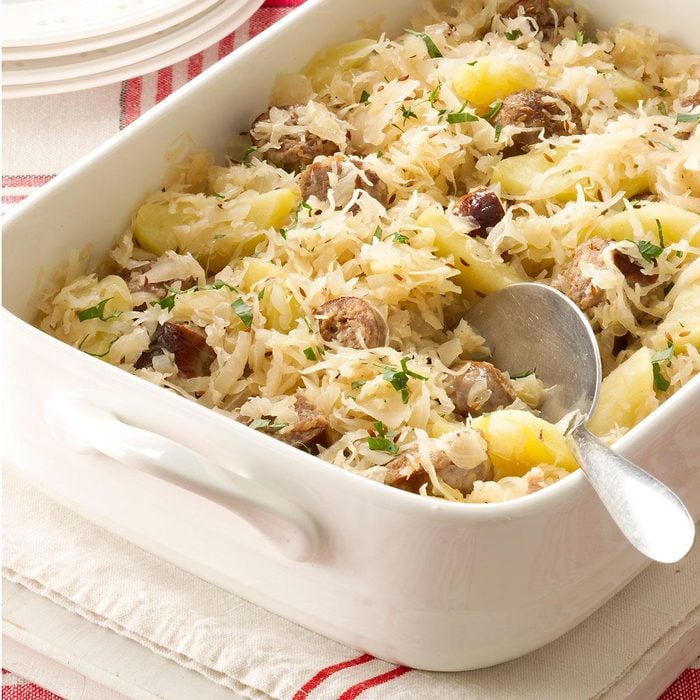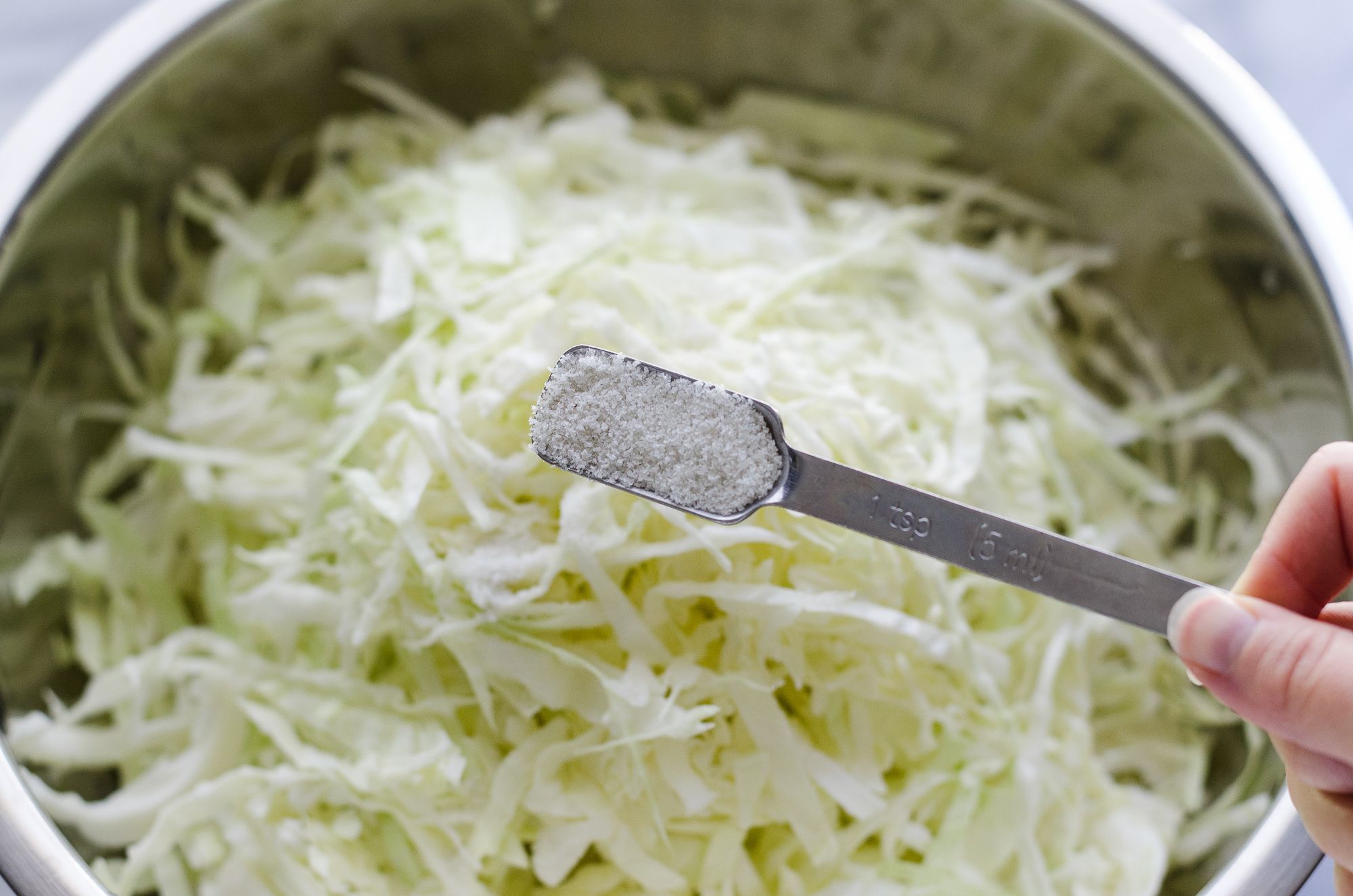Does Sauerkraut Go Bad?

Hello and welcome back to the SnapCalorie blog, your ultimate guide to maintaining a healthy lifestyle. Today, we venture into the realms of fermented foods, evaluating the longevity, nutritional value, and safety of a specific food item – Sauerkraut.
Defining Sauerkraut
Looking for a bright punch of tangy flavor for your diet? You might reconsider sauerkraut if you haven’t already. Sauerkraut, often seen sided with several traditional dishes, is a type of fermented food made from shredded cabbage. Its origins trace back to the regions of Eastern Europe and Germany, but its popularity has since spread worldwide.
The creation of Sauerkraut involves a simple, yet effective, process known as lactic acid fermentation. Freshly shredded cabbage is mixed with salt, which aids in the extraction of water from cabbage. This briny solution creates an ideal environment for beneficial bacteria, mainly of the Lactobacillus species, to ferment the sugars in the cabbage, thereby producing lactic acid. This gives Sauerkraut its signature sour taste and extends its shelf life.
What's in the Kraut?
Delving a little deeper into the dish, sauerkraut’s list of ingredients is remarkably simple. It primarily consists of cabbage and salt! However, many cultures prefer adding their unique twist. In various recipes, you might find extras like carrots, garlic, onions, spices, or even fruits. The fermented cabbage remains the star, and the side-ingredients merely enhance its much-loved tanginess.
Is Sauerkraut Healthy?
The indubitable answer to this is yes, absolutely! Sauerkraut has established itself as a health-food superstar, offering numerous physiological benefits.
Nutritionally, sauerkraut is a powerhouse. A single cup of Sauerkraut (approx. 142 grams) adds paltry 27 calories to your count, yet it boasts 4 grams of fiber, 35% of daily Vitamin C intake, 21% of daily Vitamin K requirements, and a robust punch of Iron, Calcium, and Potassium. The high fiber content supports digestion and may assist in weight loss. Vitamin C helps in repairing body tissues and boosting immunity, while Vitamin K plays a crucial role in enhancing bone health.
What sets Sauerkraut apart from other forms of cabbage is the fermentation process it undergoes. The healthy microbes involved in this process transform a simple cabbage into a probiotic-rich delicacy. Regular consumption of probiotics promotes a healthier gut, improves digestion, strengthens the immune system, and might even have mood-enhancing abilities.

Does Sauerkraut Go Bad?
Now, to the main question: Does sauerkraut go bad?
Let’s begin by saying that sauerkraut, like any other food, can go bad, but it takes a surprisingly long time compared to many other products thanks to the preserving magic of fermentation. When properly stored, unopened, and commercially canned sauerkraut can last up to 2 years in most cases, and even longer under perfect storage conditions. However, after you open the container, you should consume it within 2 to 3 months for optimal freshness.
The story changes slightly for homemade sauerkraut, which will usually endure for at least a few months refrigerated, provided it is immersed in its brine. As a rule, if you keep your sauerkraut submerged in its brine, which is a self-preserving acidic environment that is hostile to harmful microbes, it should remain consumable for an extended period.
Nevertheless, like all food items, signs of spoilage such as an off-smell, a change in texture, mold growth, or a tinkling sensation on the tongue upon consumption are reasons enough to discard the batch.
So now, we know the answer to “Does sauerkraut go bad?” As is the case with any food, yes, it potentially can, but its distinct fermentation process does imbue it with remarkable staying power that, when leveraged correctly, can ensure you have a potent probiotic source long after you jar it.
Remember to consume it mindfully, relishing not just its diverse flavor profile but also the wealth of benefits it brings to your health! Stay tuned to the SnapCalorie blog as we continue to offer insights into the world of nutrition and health.
Sauerkraut: More than a Topper
Who said sauerkraut can only be a side dish or a topper for your bratwurst, hot dogs, or pies? Possessing a unique tangy flavor, sauerkraut can excellently infuse a depth of taste into a variety of dishes. Here are a few noteworthy examples of how this nutritious food can add value and give a new spin to your daily meals.
Sauerkraut Soup
Sauerkraut soup, an Eastern European favorite, is a hearty comfort food worth trying. The tanginess from the sauerkraut adds depth to a classic soup base, creating a wonderfully warming combination. This can be made heartier by adding potatoes, smoked sausage, or ham hock, and rounding it off with a good squeeze of lemon juice.
Sauerkraut Salad
A crispy and tangy sauerkraut salad makes for a quick lunch option or a delicious side dish to grilled meats. Mix it with grated carrots, apples, onion, and a dressing made from olive oil, honey, and mustard for a splendid combination of flavors.
Sauerkraut Stir-fry
Revamp your traditional stir-fry by including sauerkraut. Try this with chicken or tofu, throw in other veggies like bell peppers, broccoli, and carrots, and stir-fry with ginger garlic paste. Lastly, mix in the sauerkraut for an exciting contrast of flavors.
Sauerkraut and Sausage Casserole
A sauerkraut and sausage casserole makes for a delicious, filling dinner. Layer sauerkraut, sausage, onion, apple slices, and spices in a baking dish and bake until the flavors meld together beautifully.
Kimchi-style Sauerkraut
If you love kimchi, a spicy Korean form of fermented cabbage, you can adapt those flavors to sauerkraut. Mix sauerkraut with minced garlic, ginger, and Korean red pepper flakes (gochugaru) for a delicious twist.
Remember, with sauerkraut, it's always crucial to introduce it towards the end of the cooking process. This not only helps to maintain its tangy flavor profile but also preserves its probiotic benefits - which do not react well to high heat.
Incorporating sauerkraut into your regular meals not only adds depth to your dishes but also introduces beneficial probiotics into your diet in a deliciously varied way. The options are abundant and versatile, limited only by your imagination. Who knew this humble cabbage could be such a gastronomic and nutritious game-changer?
Remember – quality matters. Ensure you are buying unpasteurized sauerkraut or making it at home to ensure you are reaping all the probiotic benefits. Yes, sauerkraut can indeed go bad, but its longevity when correctly stored and its fascinating array of dietary benefits make it an excellent addition to your kitchen larder.
Until next time, keep exploring nutrition and flavors with us here at SnapCalorie. For quick and easy ways to track your nutrition, check out the SnapCalorie app. Happy Eating!
Want more food tips? Check out "Is Melatonin Healthy?"